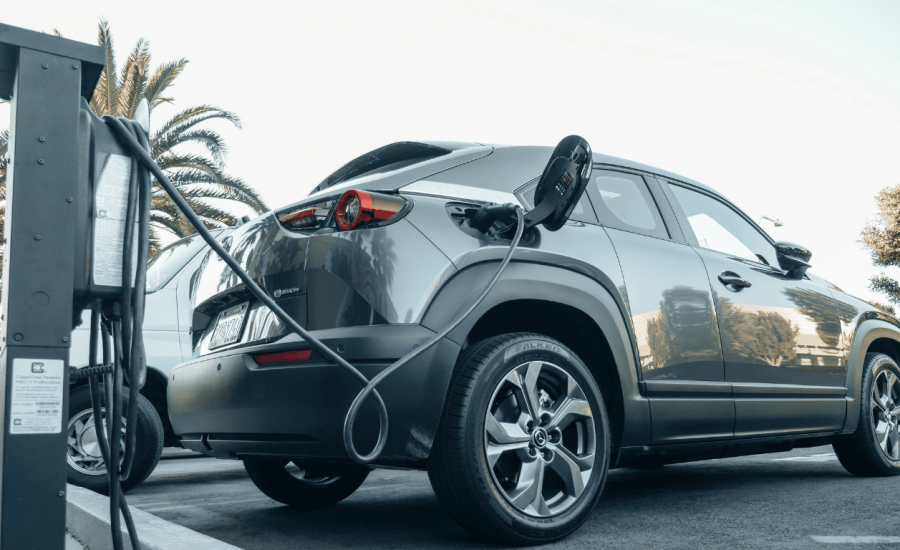How to Bring EV Charging to Your Apartment, Hotel, or Campus Housing
As of February 2025, 7.9% of all new vehicles sold in the U.S. were electric, and that number keeps growing. For property owners and developers, EV charging has quickly shifted from a “nice-to-have” to an amenity that guests and residents expect. Whether you manage an apartment community, hotel, or student housing property, now is the time to plan for EV charging. In this guide, we’ll cover all you need to know about EV chargers at your organization, including what’s involved, what to consider, and how to make them work for your business.
Planning for an EV-Ready Property
Whether you’re constructing a new development or managing a property that’s been in business for 50 years, having a strategy in place for EV chargers can accelerate your organization. Electric vehicle charging stations can be planned in advance, making your property EV-ready so you can scale charging as demand grows without expensive rework later.
For new construction, EV planning should be incorporated into the initial design. For existing properties, it can be integrated into the upgrades you’ve already been planning to do, like resurfacing or restriping a parking lot or updating the electrical systems.
“You don’t have to electrify every spot right away, but future-proofing now is far cheaper than tearing up concrete down the road. We have one client who installed 4 charging stations but prepped the site for 12. The additional 8 aren’t needed yet, but when they are, the infrastructure is already in place.”
– Aaron Herbst, MDU Account Executive
In some parts of the country, like California, new developments build half of all parking spots EV-ready from day one. Depending on your area and EV charging demand, it might make sense to look further ahead for the consumer demand, and install what you need now but build capacity for what you’ll need next.

Choosing the Right EV Charging Partner
One piece that many property owners overlook at first? Who’s actually powering your chargers behind the scenes. The hardware on the wall is just the start. The real day-to-day experience lives in the software and support behind it.
Groove works with partners like SWTCH and ChargePoint because they’ve been in the EV space for years and understand what property managers actually need:
- Clear visibility into energy use and costs
- Simple tools to see who’s charging, when, and how often
- A smooth experience for drivers, so you’re not fielding tech support calls all day
The right electric car charging station provider helps you make smarter decisions about capacity, pricing, and future expansion. Most importantly, it makes EV charging feel like a well-run amenity instead of a new headache.

Dedicated vs. Shared Chargers
Once you’ve committed to EV charging, the next question is how residents and guests will use it. Most properties gravitate toward one of two models. While both can work, the experience is very different:
- Shared chargers that are available to any tenant or visitor
- Dedicated chargers assigned to individual residents’ parking spaces
The Friction of Shared Chargers at Apartments
Shared stations are flexible, but they can quickly become a source of frustration at a multifamily property. For instance, imagine you have an EV, and after you come home from work, you snag a spot that charges your car. You plug in and head inside, but unfortunately, another tenant needs the spot when yours is done. Therefore, after you’re already in bed, the app notifies you that you have to move your car so the other resident can park there, or you get fined.
Or, picture this: your car only has a few miles left on its charge, but there are no open spots available for you to plug in at your complex, so you either have to wait or go somewhere else and pay for a charge. On an existing property with limited parking or tight circulation, this can create real tension between neighbors.
Why Dedicated Chargers Win on Experience
With a dedicated charger, a resident can:
- Plug in when they get home and leave the car overnight
- Take advantage of off-peak hours for cheaper electricity
- Wake up to a full battery, with no waiting, no shuffling cars, no fighting for a spot
“Dedicated chargers in residents’ own spots provide a much better experience for multifamily properties. They’re willing to pay for that convenience, turning EV infrastructure into a premium, predictable amenity instead of a shared resource to compete over.”
– Aaron Herbst, MDU Account Executive
What’s Involved in EV Charging Installation
Installing EV chargers isn’t as simple as adding a few outlets. It involves electrical infrastructure, internet connectivity, and software for monitoring usage and billing. We’ll briefly walk through what needs to happen in order to offer EV chargers at your property.
Site Assessment
To begin, your property needs an evaluation. The technicians will assess your site and determine the ideal location of a charging station depending on the proximity to power sources, as well as visibility and accessibility of the users. Your property’s electrical capacity will also be calculated to determine if the current electrical infrastructure can support additional loads. Wi-Fi availability will also be determined and mapped if the digital infrastructure is insufficient.
Design and Planning
The technician will then start to design the charging stations. This may require upgrades to electrical panels or transformers to account for the additional electrical capacity required. In addition, trenching or concrete pouring could be necessary for your site preparation to run conduit to parking areas. Your property will also need to apply for any necessary local and state permits.
Installation and Setup
When the planning is complete and the permits are in place, it’s time for installation. Installation, depending on the layout and any electrical infrastructure needs, can take anywhere from a few days to a few weeks. Most properties use Level 2 chargers, which can charge a vehicle in 6 – 8 hours. This charge time is ideal for overnight residents or guests.
Connection and Testing
A network connection will be established after installation. This allows for smart charging, remote monitoring, and payment processing. The system will be thoroughly tested and inspected to ensure it is functioning properly and running safely.
Cost Factors for EV Charging Stations
It can be difficult to put a hard and fast ROI for an EV charging station at your hotel, apartment, or senior living community. Every community has its own challenges and advantages as well as target tenant and guest. We’ll walk through some potential revenue gains and cost-saving initiatives.
Amenity Fees & Smart Promotions
EV charging may not be a direct profit center, but it adds clear property value and helps attract high-quality tenants. Many apartment complexes charge an amenity fee for a reserved EV spot. Others may offer free charging for the first year as a promotion, which can be more appealing than typical “one month free rent” offers.
Advanced systems can slow or speed charging based on energy rates. These can save additional energy costs during peak hours by optimizing usage overnight.
Rather than treating EV charging as a revenue line item, many hotels offer it free of charge as a guest perk. It’s an easy way to differentiate in a crowded marketplace and appeal to eco-conscious travelers who actively seek out sustainable options. Today, about 26% of hotels across the country offer EV charging, but among luxury properties, that figure jumps to nearly 90%.
Tax Incentives and Credits
Before installation, it’s smart to pause and see who might help fund the project. Many utilities, air quality districts, and local or state agencies offer incentives that can significantly lower the cost of EV infrastructure for commercial and multifamily properties. Some programs can offset the cost of installing the chargers or running conduit.
These programs may cover make-ready work (panels, trenching, conduit), offset hardware costs, or provide design support and technical guidance. While many rebates have scaled back since 2022, meaningful opportunities still exist, particularly in regions prioritizing clean transportation and sustainability. Because most incentives are time-limited and first-come, first-served, it pays to explore them early in the planning process so you can align your design, budget, and timeline with the best available funding.

Challenges of Retrofits
Installing EV chargers in existing properties brings unique challenges that differ from new construction. A retrofit often starts with the goal of offering EV charging to current residents or tenants, but doing so raises practical and logistical questions.
Sometimes, properties will survey the community to identify who currently drives an EV, who plans to, and who would pay for a charger. That data helps determine how many chargers to install, where to locate them, and how to manage future demand efficiently.
Why EV Stations Are Worth It
Installing EV charging stations is about positioning your property for the future. The intrinsic value lies in attracting a specific type of customer: residents and guests who care about sustainability, technology, and convenience. Being able to market EV charging as an amenity helps you stand out and fill units.
If you choose to charge a fee for use or for dedicated EV spaces, that can also become a modest but meaningful ROI driver. Modern charging software is incredibly robust, giving property managers full visibility into station usage, electrical costs, and what residents are being billed. You can control charging speeds, manage load, and see exactly how your infrastructure is performing.
“It’s not about immediate revenue. It’s about attracting tenants who value sustainability and technology. EV charging supports your environmental goals, boosts retention, and makes “EV-ready” a powerful differentiator for any property type.”
– Aaron Herbst, MDU Account Executive
To learn more about how EV charging stations can elevate your property, get in touch with Groove today.


